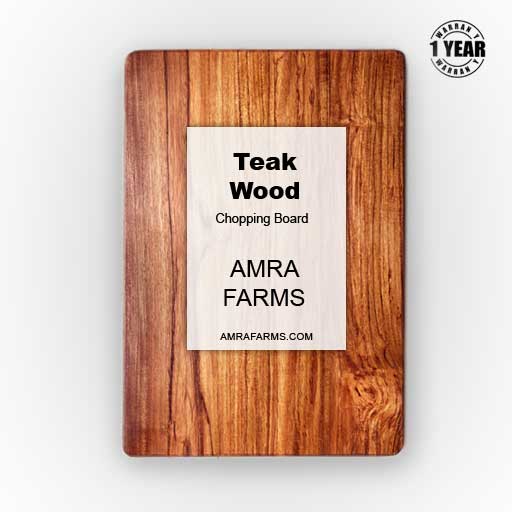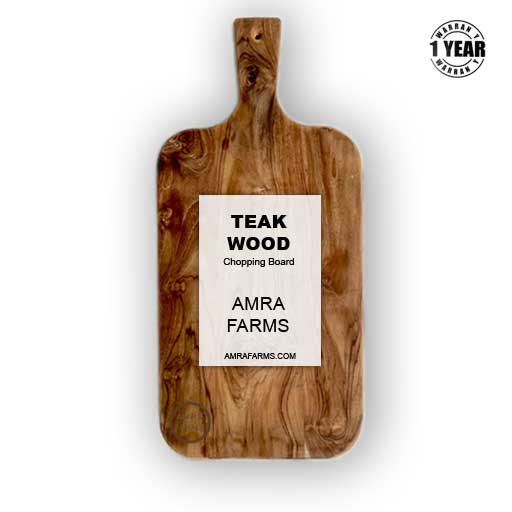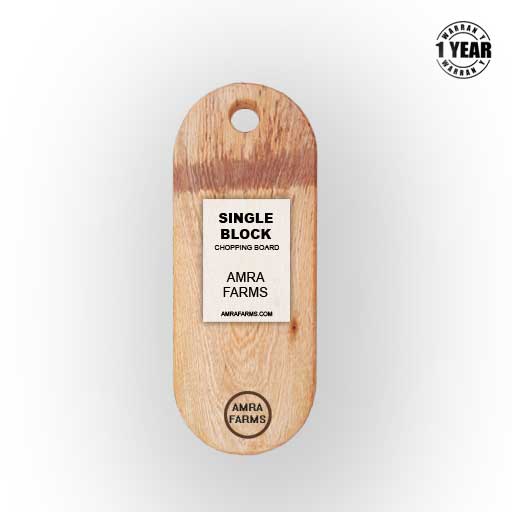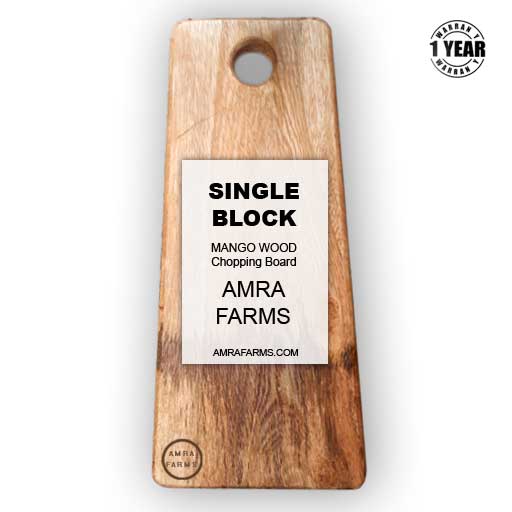Your cart is currently empty!
The Pros and Cons of Having a Juice Groove in Your Cutting Board
A juice groove is a functional design element that stops liquid from flowing onto your countertop. It’s a very small design but highly functional. This may sometimes affect the aesthetics of your board, but it saves you time cleaning your countertop over the course of using the board. That said, juice grooves have their downside too.
Have you ever come across a situation where you had to cut tomatoes or juicy fruits and found that you messed up your kitchen counter because the juice spilled all around the board? That may have been easy to clean. But imagine slicing a juicy steak on the same board — the fat spilling onto the counter, sticky and greasy, ruining your countertop. It’s hard to clean the surface and requires a good wash after cutting just one steak. Was it worth it? Could you have saved the effort with just a small addition to your cutting board?
These are the times you wish your chopping board had juice grooves. The shallow trench around the edges of your board is more than just a design element — it’s a functional feature created to catch and contain runaway juices before they spill onto your counter. This little detail influences everything from cleanliness to cutting efficiency, and even your food presentation. The small groove can make a noticeable difference in your kitchen workflow.
Staff picks
Top rated products
Single Block Premium Mango Wood Chopping Board With Juice Grooves Large
Original price was: ₹1,999.00.₹949.00Current price is: ₹949.00.Teak Wood Cutting Board – 40cm x 30 cm x 2 cm : 100% Teak Solid Hardwood Vegetable Cutting Board
Original price was: ₹2,599.00.₹1,351.48Current price is: ₹1,351.48.Elegant Teak Wood Cheese Board – Premium Serving Tray for Cheese & Crackers
Original price was: ₹2,999.00.₹1,999.00Current price is: ₹1,999.00.Mini Oval Mango Wood Cutting Board with Handle | Premium Single-Block Chopper Board | Rustic Natural Finish
Original price was: ₹999.00.₹699.00Current price is: ₹699.00.Teak Wood Butcher Board : Single Block
₹4,999.00
What Is a Juice Groove?
A juice groove is the channel around the cutting board, usually half a centimetre deep and about the same width, running around the edges of the board. The purpose of a juice groove is to catch liquid from the food you cut. This is especially useful when cutting meat, fish, and juicy vegetables or fruits.
Juice grooves prevent spills onto the countertop and help reduce the chances of cross-contamination. You’ll often find juice grooves on wooden cutting boards, and occasionally on bamboo boards. Glass, steel, and stone/marble cutting boards generally don’t have this feature. Plastic boards usually have a raised border instead — not technically a juice groove, but it performs the same function of preventing food spills.
Juice Grooves Are Useful For:
- Carving meats like roast chicken, steak, or turkey — the groove prevents fat and juices from spilling out of the cutting area, keeping your countertop clean.
- Chopping juicy fruits — when cutting fruits like oranges, watermelon, or tomatoes, juice often flows off the board. A juice groove prevents this mess.
- Cutting cooked vegetables — though rare, chopping cooked vegetables with high moisture content can cause a mess. Juice grooves can help prevent this.
Pros of Having a Juice Groove
A. Prevents Mess and Spills
The biggest advantage of a juice groove is its ability to catch runaway fluids from juicy food. Whether it’s tomatoes, fruits, or a steak — your countertop stays mess-free. The grooves collect excess juice and keep it from spilling over the board’s edge. This means cleaner countertops, fewer paper towels, and less time spent cleaning your kitchen.
B. Better Hygiene
When juice spills onto your countertop, it’s not just messy — it’s a health hazard. Especially when cutting raw meat, the fluids can transfer to other foods, causing cross-contamination. Juice grooves effectively prevent spillovers and reduce bacterial spread, keeping the mess contained on your board.
C. Ideal for Carving Meat
If you eat meat and often cut cooked meat, you’ll find juice grooves especially effective. Large meats — especially grilled or barbecued — may release juices when sliced. A board without grooves will let the fat spill over, creating a mess. Also, those juices are packed with flavour, and you wouldn’t want to waste them. A juice groove helps you collect every drop.
D. Helps Maintain a Board Grip
Some foods are slippery — fish, for example, is tricky to cut on a flat board. The juice groove can act as a small barrier, holding the food in place and preventing it from sliding off. However, remember that it’s designed to hold liquid and will only help keep food in place to a certain extent.
Cons of Having Juice Grooves
A. Reduces Usable Cutting Space
A juice groove decreases surface area by about 1 inch on each side. This reduces your usable space, especially when kneading flour or cutting larger ingredients.
B. Hard to Clean
Juice grooves are harder to clean and may require a small brush (like a new toothbrush) to properly scrub the channel. Ignoring this can lead to bacterial build-up. Choose a board material that’s antibacterial and smooth if you’re going for one with juice grooves.
C. May Not Be Necessary for All Users
If you mostly cut vegetables or cook for a small family, a juice groove may be overkill. You could do without one and maintain the integrity and beauty of the wood. Juice grooves are functional design choices for specific needs — not a necessity for every kitchen.
D. Affects Aesthetics and Style
Some of us appreciate the natural beauty of chopping boards — especially materials like teakwood, which feature stunning grain patterns. If you prefer a clean, elegant look, juice grooves may not align with your style.
When Should You Choose a Chopping Board with a Juice Groove?
There are a few reasons to opt for a juice groove on a chopping board. It all depends on your cooking style and frequency.
- You host dinners and carve meat often.
If you’re cutting meat at the table more than 3–4 times a year, a juice groove can be a game-changer. - You’re a messy chef.
Let’s face it — not all of us are neat in the kitchen. If you tend to leave behind a mess (especially for your partner to clean), a juice groove saves time, effort, and possibly a post-dinner argument. - You cook large batches for a big family.
Even if it’s just fruits or vegetables, cutting large quantities increases the chances of spills. A juice groove helps contain the chaos.
Alternatives to Juice Grooves on a Chopping Board
If you don’t like juice grooves, here are some clever kitchen hacks to achieve the same cleanliness:
- Use a rimmed tray.
Place your chopping board inside a rimmed container or tray when cutting meat. The grease flows into the tray, not your countertop. - Use a silicone mat.
Silicone mats with raised edges are easy to clean, dishwasher-safe, and non-slip. Not the prettiest, but definitely practical. - Use a damp kitchen towel.
Place a damp towel under your chopping board. It will absorb any flowing liquids and prevent messes or puddles. Just toss it in the laundry after use.
Conclusion
The decision to choose a cutting board with a juice groove ultimately comes down to how you cook. It’s not an essential design if you can manage your prep efficiently — but it’s certainly a handy convenience. Whether you love it for hygiene, cleanliness, or functionality, a juice groove is a small feature with a big impact.
Categories
Recent Posts
- How to Fix Scratches and Scuff Marks on Your Wooden Cutting Board
- How to Use a Large Wooden Cutting Board for Meal Prep and Entertaining
- The Pros and Cons of Having a Juice Groove in Your Cutting Board
- Messy Counters After Cutting Veggies? Here’s How to Keep It Clean and Easy
- Health Benefits of Using a Teak Wood Chopping Board
Best selling products
Single Block Premium Mango Wood Chopping Board With Juice Grooves Large
Original price was: ₹1,999.00.₹949.00Current price is: ₹949.00.Mini Oval Mango Wood Cutting Board with Handle | Premium Single-Block Chopper Board | Rustic Natural Finish
Original price was: ₹999.00.₹699.00Current price is: ₹699.00.Mango Wood Tray Platter Small : Oval Mango Wood Cutting & Serving Board with Dual Handles | 15″ x 8 “x 1” |Handcrafted Single Wood Block | Natural Rustic Finish
Original price was: ₹999.00.₹749.00Current price is: ₹749.00.Rectangular Mango Wood Cutting Board with Cut-Out Handle | Handcrafted from a Single Block | 8″ x 15″ x 1″ | Small Chopping Board
Original price was: ₹999.00.₹799.00Current price is: ₹799.00.







